Recent Articles
Popular Makes
Body Types
2021 Mazda CX-5 Road Test and Review
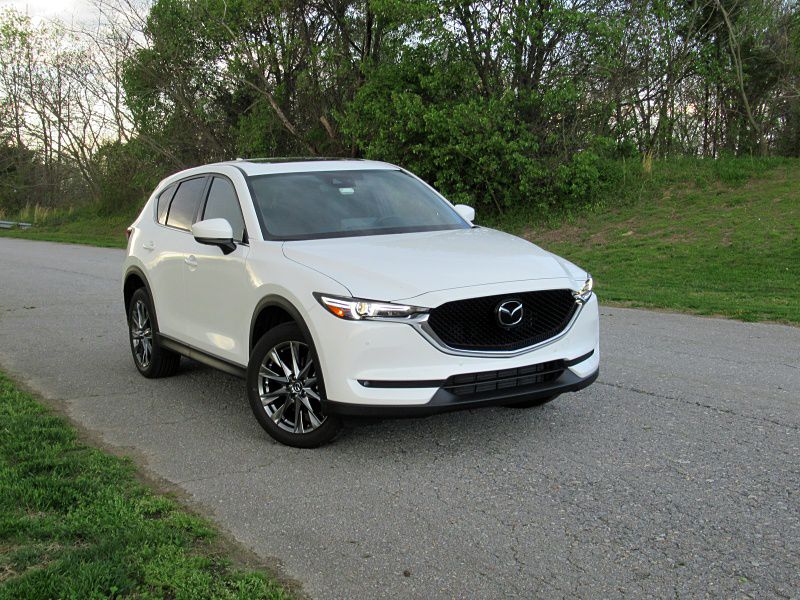
2021 Mazda CX-5 Signature ・ Photo by Brady Holt
Most affordable SUVs are designed to be useful. They’re boxy enough to have lots of room inside, and then the stylists get to put on some finishing touches. And they’re designed to prioritize comfort and fuel economy over sporty performance. Folks who want more style and zippy performance generally have to spend big bucks for a luxury model.
But there’s another option: the 2021 Mazda CX-5. Even though it starts at a reasonable $25,370, the CX-5 looks like a high-end sporty SUV — and it has the handling poise to match. Upper trim levels add extra-posh interior decor and a punchy turbocharged engine, too. New this year are a bigger infotainment screen, wider availability of the turbo, and a longer list of safety features. If you’re willing to give up a few cubic feet and a couple of miles per gallon to get a different type of compact crossover, at an unexpectedly low price, keep reading to learn more about the CX-5’s pros and cons.
From Affordable to Luxury
As we mentioned, the CX-5 has a wide model range; it has swelled this year to seven trim levels. Even its upper trims are a relative bargain, and its entry-level models are downright steals.
Even the base Sport ($25,370) already comes packed with safety, convenience, and aesthetic amenities. Unexpected goodies include rain-sensing windshield wipers, a leather-wrapped steering wheel, and a 10.25-inch infotainment screen. The Touring ($27,110) is loaded by the class standards, adding leatherette upholstery, a power driver’s seat, heated front seats, and automatic climate control, while swapping a four-speaker stereo for a six-speaker one. A $1,445 package includes true leather, a 10-speaker Bose stereo, a power liftgate, and a moonroof. A new Carbon Edition has those same features at a similar price ($28,955), but the big news is that you can get it with the turbo engine for $30,760. Other trim levels include the Grand Touring ($30,560 with the base engine), Grand Touring Reserve ($35,385 with the turbo, a heated steering wheel, and ventilated front seats), and the top-of-the-line Signature ($37,505), which is dressed up with Nappa leather and genuine wood trim.
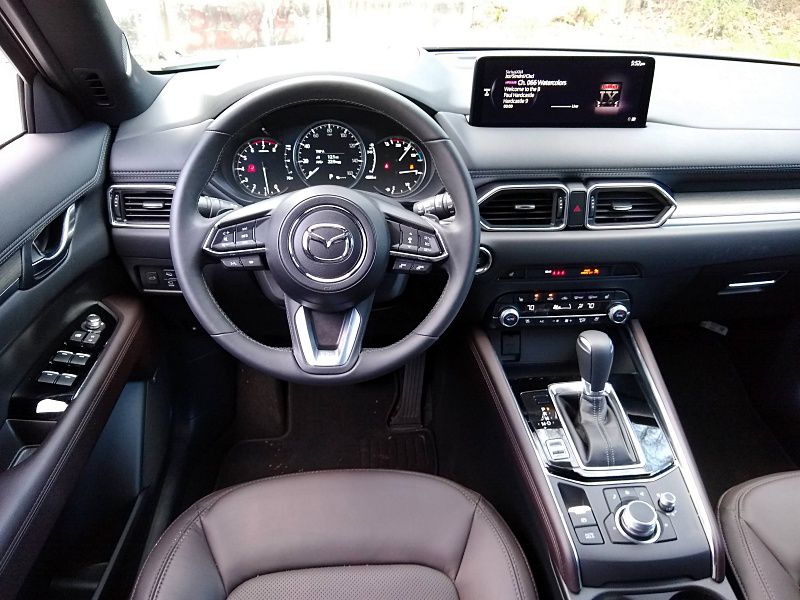
Photo by Brady Holt
Sporty Style
Even the base CX-5 looks sleek, with slim headlights and taillights, a hunched-forward look, and a small rear overhang. It looks smaller than its competitors even when it isn’t. You can’t make an SUV that looks like this if you’re trying to eke out every cubic foot of interior space, and Mazda decided not to play that game. We think the design still looks great even though it hasn’t changed since 2017.
Mazda also provides LED headlights and 17-inch alloy wheels on even the base model, and entry trims’ absent fog lights don’t leave glaring holes on the bumper like too many other vehicles. This isn’t a vehicle that only looks nice in the press photos, then disappointing when you get to the dealership to take home an affordable model. Step up beyond the Touring and you get big 19-inch wheels like on our Signature test vehicle. You can also dress up the CX-5 with vibrant Eternal Blue and Soul Red paint, except on the Carbon Edition; if you want the big engine at a low price, your only color choice is gray.
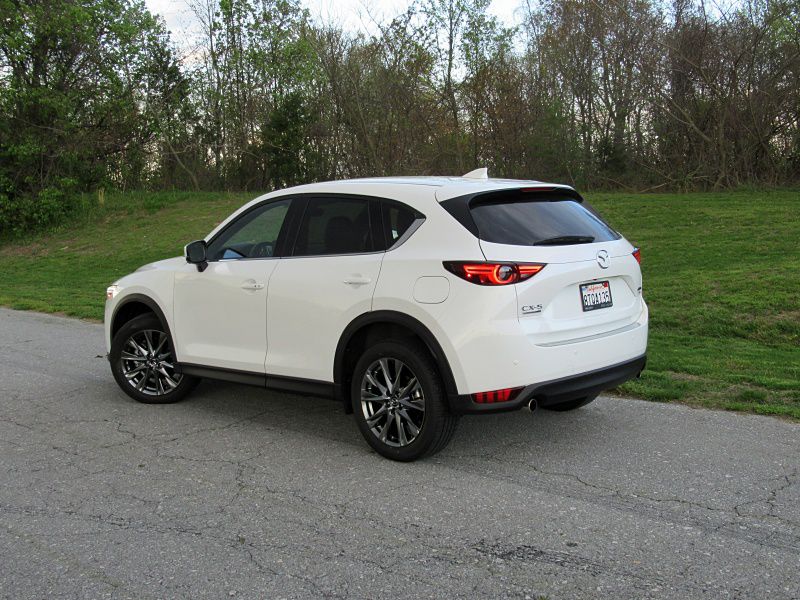
Photo by Brady Holt
Updated Interior
Mazda updated the CX-5’s interior this year with a 10.25-inch infotainment screen, which the company has been introducing across its lineup. That’s a big jump from the diminutive 7-inch screen Mazda provided from 2017 to 2020. However, it’s not a touchscreen anymore; you have to use a rotary controller between the front seats, which has a steeper learning curve. Dark, muted graphics also keep the new screen from dazzling, but at least it’s never distracting to look at. Android Auto and Apple CarPlay are standard.
Besides the infotainment update, the CX-5’s interior layout hasn’t changed much since 2017. The screen still perches atop a low dashboard, and while putting the infotainment controls between the front seats is unconventional, it declutters the dash successfully. Our Signature test vehicle has subtle but appealing wood trim and rich brown leather upholstery. Some basic plastics, including a wobbly turn signal stalk, keep this Mazda from rivaling an Audi’s interior ambiance. And its gauges are clear but plain, also departing from luxury ambitions. But overall, this remains one of the nicest interiors among affordably priced crossovers, and even entry-level CX-5s have high-end styling and materials.
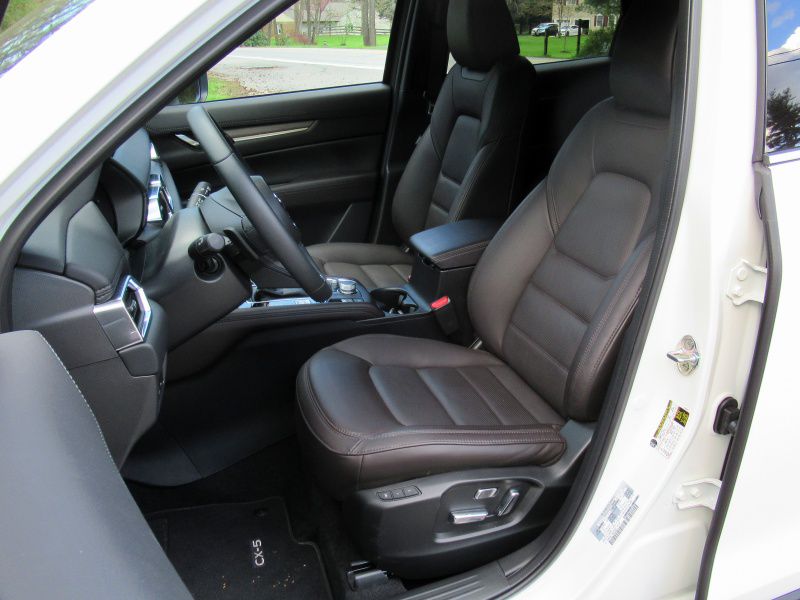
Photo by Brady Holt
Comfortable, Not Huge
We’ve alluded to this before, but let’s make it crystal clear: The Mazda CX-5 is not especially roomy for a compact crossover. While models like the Honda CR-V, Nissan Rogue, and Subaru Forester have generous legroom and ample cargo holds, Mazda decided that at least one car in its class should put form over function.
The result isn’t that the CX-5 is cramped and tiny. In fact, it actually remains roomier than many similarly sized luxury suvs that followed similar priorities. But this Mazda is missing the stretch-out generosity that characterizes its segment’s best-sellers. Its front seats are comfortable, but adults sitting in the back may brush their knees against the front seatbacks. Cargo capacity is 30.9 cubic feet behind the rear seat and 59.6 cubic feet with the rear seat folded; that’s still enough space for groceries, suitcases, or a couple of dogs, but it’s among the smallest cargo holds in its segment. You’ll feel the difference when you’re trying to squeeze in a bulky piece of furniture or the whole family’s camping gear; decide for yourself if that will happen often enough to be a problem. The CX-5 is rated to tow a decent 2,000 pounds with either of its engines.
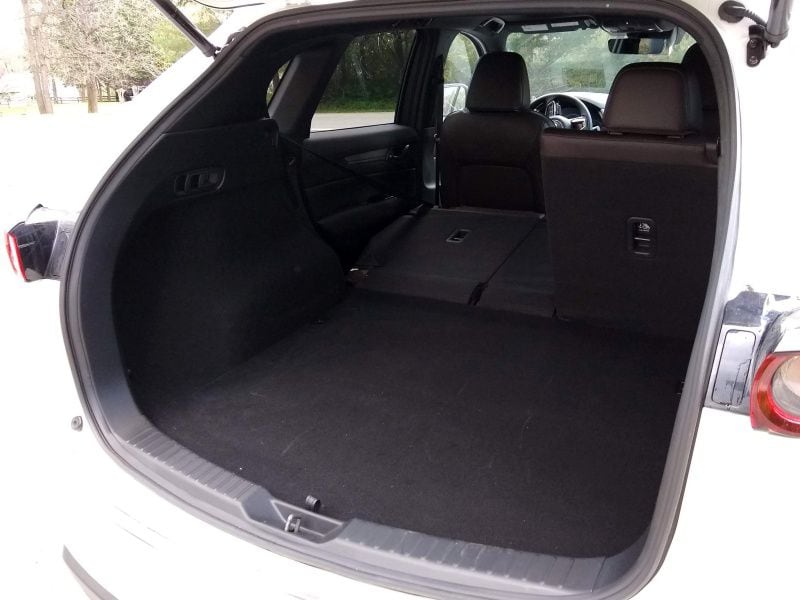
Photo by Brady Holt
Agile Handling
Mazda is a brand that likes to emphasize sporty performance, and the CX-5 lives up to the promise. You won’t confuse this SUV for a Mazda MX-5 Miata roadster, or even a Mazda3 compact car, but the CX-5 has firmer, more responsive steering and superior handling composure than its competitors. Even if you’re shopping in the luxury segment, you wouldn’t be disappointed.
If you want a cushy, easygoing SUV, though, it might not be your first pick. The CX-5 doesn’t have a stiff ride, but it’s firm and taut; it doesn’t isolate you from the road. And the firm steering that’s great for corner-carving also means a bit of extra effort when you just want to park the car. If you’re looking for something relaxing, you’ll have plenty of other crossovers to choose from.
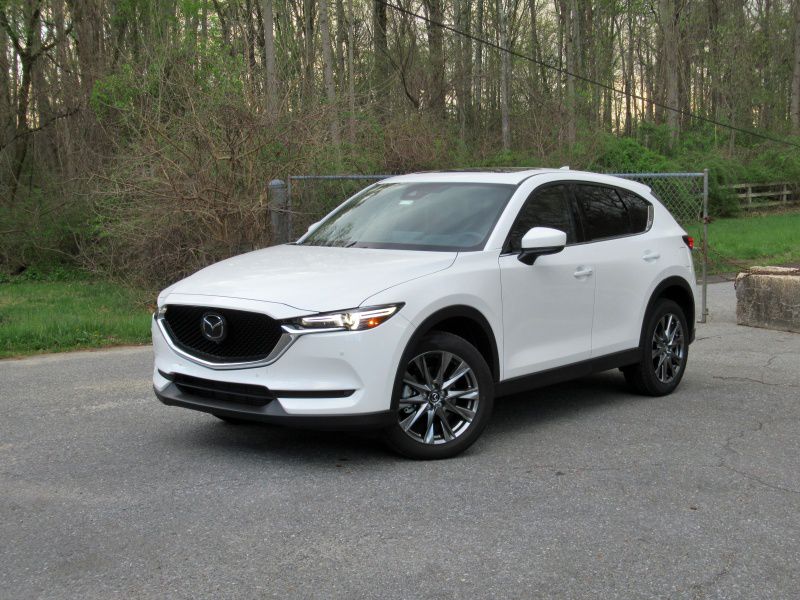
Photo by Brady Holt
Turbo Performance
The CX-5 comes standard with a 2.5-liter four-cylinder engine that makes 187 horsepower and 186 lb-ft of torque. That’s decent but unremarkable for a compact crossover; with this engine, the Mazda feels agreeably peppy when it’s driven normally, but if you try to accelerate harder, there isn’t a lot of extra juice. That’s where the turbo comes in. It makes a zesty 227 hp and 310 lb-ft of torque on regular-grade fuel and 250 hp and 320 lb-ft on premium. It’s not the richest-sounding engine in the world, but it’s undeniably quick, even when mated to an old-school transmission: a six-speed conventional automatic.
Fuel economy isn’t a class standout, but the CX-5 isn’t a gas-guzzler either. The base engine gets an EPA-estimated 25 mpg in the city, 31 mpg on the highway, and 28 mpg combined with front-wheel drive, and about 1 mpg less with all-wheel drive. That’s a couple miles per gallon less than the class leaders. The front-drive turbo gets 23 mpg city, 28 mpg highway, and 25 mpg combined, with AWD again costing about 1 mpg. Our AWD turbo test vehicle averaged about 24 mpg in a mix of mostly back roads and open freeway.
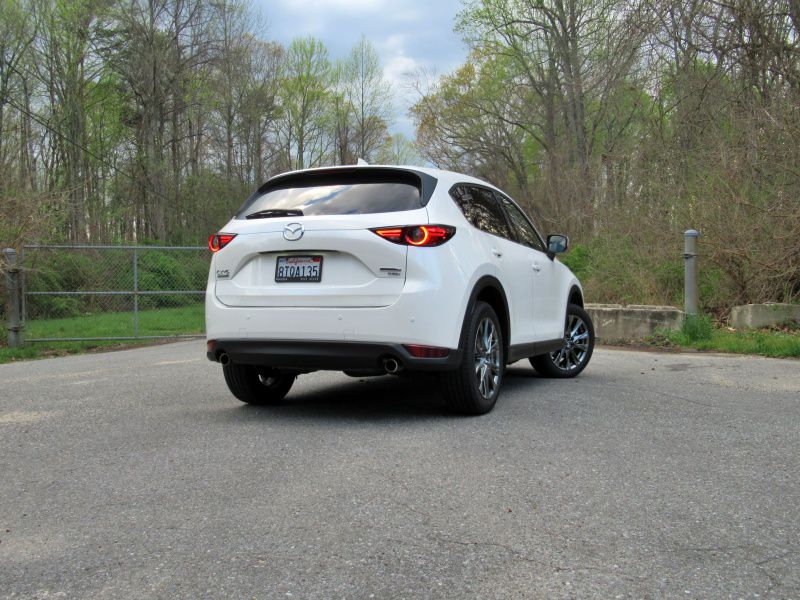
Photo by Brady Holt
Standout Safety
Despite its advancing age, the CX-5 continues to achieve standout crash-test performance. It earned the highest score of Top Safety Pick+ from the Insurance Institute for Highway Safety, along with five out of five stars from the National Highway Traffic Safety Administration.
Moreover, the CX-5 comes packed with advanced safety and driver-assistance features. Adaptive cruise control, forward automatic emergency braking, lane-keeping assistance, blind-spot monitoring, and a rear cross-traffic alert are all standard equipment. Driver attention monitoring and rear automatic braking are newly available this year as well, but they’re restricted to the top Signature model.
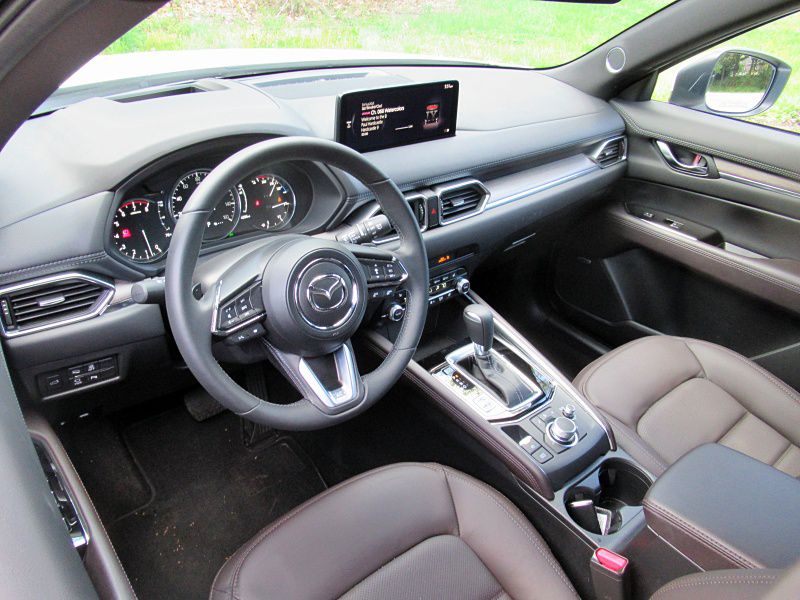
Photo by Brady Holt
Varied Competitors
The top competitors to the CX-5 depend on what you’re looking for in a compact crossover. The well-rounded Honda CR-V and Nissan Rogue are roomier and more fuel-efficient, and they handle better than you might expect, but neither has the Mazda’s sporty, premium aura or its available extra-powerful engine. The flashy new 2022 Hyundai Tucson is storming onto the scene with lots of features for the money and more room than the CX-5, but it doesn’t appear ready to take the crown for driving enjoyment. The Ford Escape keeps up with the CX-5 for power and handling, but it lacks the high-end vibe. The Chevrolet Equinox is quiet and composed but unexciting. And the Kia Sportage delivers refinement and value, just not much sport.
Among premium brands, folks interested in relatively affordable models like the Infiniti QX50, Acura RDX, Lincoln Corsair, and Lexus NX 300 would do well to consider the CX-5. When a luxury badge isn’t paramount, it can keep up with many aspects of their driving experiences and interior ambiances. However, much pricier SUVs like the Audi Q5 and BMW X3 indeed provide a substantially higher-tier experience.
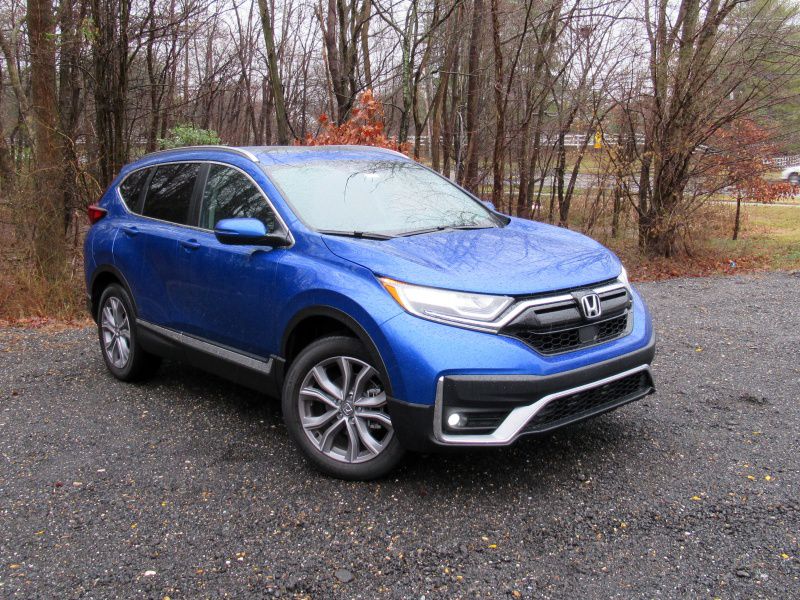
Photo by Brady Holt
A Premium Option
Mazda has been trying to establish itself as a premium brand, and the CX-5 makes a strong case for that. There’s no stripped-down base model, and Mazda invested heavily in the car’s driving experience and interior ambiance at every turn.
A few extra bucks could make the interior even nicer, and a more sophisticated transmission would likely improve both acceleration and fuel efficiency. And we’ll emphasize again that if you’re looking for the most useful compact crossover, you can look elsewhere. But overall, the 2021 Mazda CX-5 provides a high-end flavor on a low-end budget.
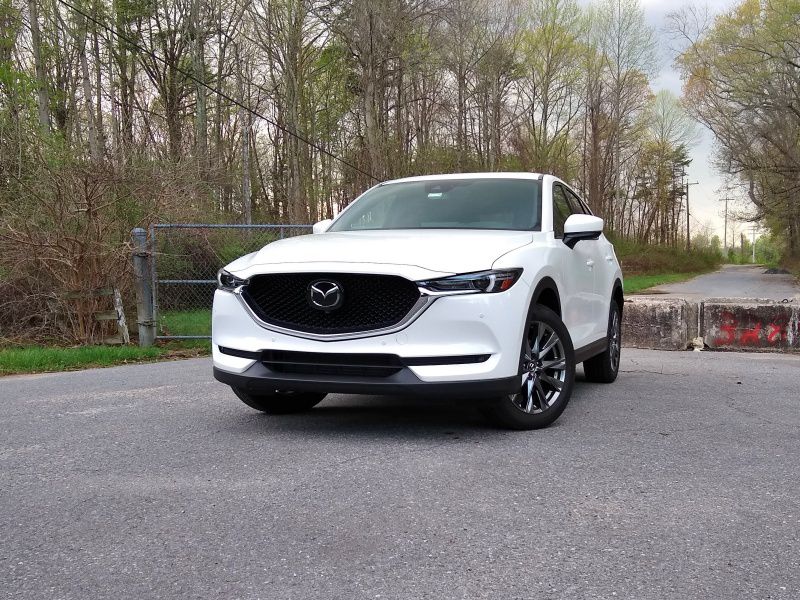
Photo by Brady Holt